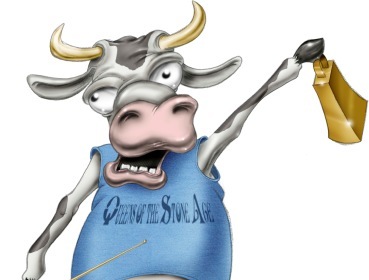Top beef exporter the United States revealed Tuesday it had discovered a case of mad cow disease in California, prompting a scramble to reassure consumers at home and abroad.
 |
(MCT) |
The U.S. Department of Agriculture reported the country's fourth-ever case of bovine spongiform encephalopathy (BSE), but stressed the outbreak was contained and no meat has entered the food chain.
The infected dairy cow from central California was uncovered on Monday but "at no time presented a risk to the food supply or human health," officials insisted.
BSE cannot be transmitted through milk.
"USDA remains confident in the health of the national herd and the safety of beef and dairy products. As the epidemiological investigation progresses, USDA will continue to communicate findings in a timely and transparent manner."
Samples from infected animal were sent to a laboratory in Ames, Iowa, where they proved positive for a rare form of the disease. The results are now being shared with labs in Britain and Canada.
The admission of even a limited outbreak is highly sensitive.
Previous cases of mad cow in the United States, Canada, Israel, Europe and Japan have caused disruptions to the global food trade worth billions of dollars.
A stream of sanctions and restrictions were introduced and in some cases and entire herds of cattle had to be slaughtered, destroying the livelihoods of many farmers.
Wary US beef producers were also keen to prevent a panic.
"The most important message is that US beef is safe," said Philip Seng, US Meat Export Federation.
According to the organization, beef exports are worth more than $353 million to the United States each month, with Mexico, Canada, South Korea and Japan among the main export markets.
The United States has an estimated 90.8 million head of cattle, forming a large chunk of the economy in states like Texas, Nebraska, Kansas and California.
Around 40,000 US cattle are tested by the Department of Agriculture each year.
On the Chicago Mercantile Exchange the price of cattle futures fell on rumors of the news.
More than 190,000 cases of mad cow disease have been detected in the EU since it was first diagnosed in Britain in 1986, forcing the destruction of millions of cows.
More than 200 people around the world are suspected to have died, most of them in Britain, from the human variant of the disease, which was first described in 1996.
Scientists believe the disease was caused by using infected parts of cattle to make feed for other cattle.
Authorities believe eating meat from infected animals can trigger the human variant of the fatal brain-wasting disease. (AFP)
<관련 한글 기사>
美 광우병 발생, 정부 ‘수입 중지 안해’
농림수산식품부는 미국에서 광우병이 발견됨에 따라 필요한 조치를 준비하되 미국산 쇠고기에 대한 검역 중단 조치를 당장 하지는 않기로 했다.
농식품부 관계자는 25일 "블룸버그통신에서 한국 정부가 검역중단 조치를 한다는 보도가 나갔는데 사실이 아니다. 미국에서 소 해면뇌상증(BSE)이 발생했다는 내용이 보도됐다는 이유만으로 정부가 검역중단 조치를 할 수는 없다"고 밝혔다.
수입 쇠고기는 검역을 하지 못하면 국내 유통이 중단돼 사실상 수입 금지 효과가 발생한다.
이 관계자는 "BSE가 사료 때문에 발생한 것인지, 자연 발생인지를 파악하려고 여러 정보를 수집하고 있다. 지금은 내부적으로 다양한 가능성을 조율하는 단계다.
그 결과를 토대로 필요한 조치 내릴 것"이라고 말했다.
블룸버그통신은 24일(현지시각) 캘리포니아주(州) 중부 목장에서 사육된 젖소 한 마리에서 소 해면상뇌증(BSE)이 확인됐다고 전했다.
`광우병'으로 알려진 소 해면상뇌증이 미국에서 확인된 것은 이번이 4번째다.
우리 정부는 2003년 12월 미국에서 최초로 BSE가 발생하자 미국산 쇠고기 수입을 전면 금지했다.
우리나라는 그동안 미국산 소 가운데 30개월령 미만이고 도축 과정에서 특정위험물질(SRM)이 제거된 쇠고기만 수입해왔다.
SRM은 광우병을 유발하는 치명적인 단백질인 변형 프리온이 많이 들어 있는 7개 부위다. 소의 뇌와 눈을 포함한 두개골, 척수를 포함한 척추, 편도•십이지장에서 직장에 이르는 내장, 장간막이 여기에 포함된다.
농식품부는 "한국이 수입한 미국산 쇠고기는 이번에 발생한 BSE와 직접적인 관련성은 없다. 가축전염병 예방법령과 미국산 쇠고기 수입위생조건을 고려해 필요한 조처를 하고, 미국의 BSE 발생 상황을 계속 지켜보겠다"고 밝혔다.
지난해 전 세계에서 확인된 광우병 사례는 모두 29건이다.
올해 수입된 미국산 쇠고기는 1월 9천400t, 2월 8천800t, 3월 9천300t이다.
연도별로는 수입이 재개된 2008년 32만2천687t, 2009년 20만7천253t, 2010년 46 만6천51t, 2011년 56만3천13t이 각각 반입됐다.




![[Today’s K-pop] Blackpink’s Jennie, Lisa invited to Coachella as solo acts](http://res.heraldm.com/phpwas/restmb_idxmake.php?idx=644&simg=/content/image/2024/11/21/20241121050099_0.jpg)



